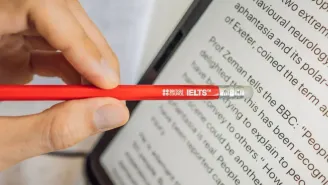Animal Minds Parrot Alex Reading Passage
Animal Minds Parrot Alex Reading Passage
Paragraph A
A recent Harvard University graduate Irene Pepperberg did something very audacious in 1977. She set out to discover what another creature was thinking by conversing with it at a time when animals were still considered automatons. She brought a one-year-old African grey parrot named Alex into her lab to teach him the English language sounds. "I believed that if he learned to communicate, I would be able to inquire about his worldview."
Paragraph B
Many scientists believed that animals lacked the capacity for thought before Pepperberg's conversation with Alex, who passed away in September at the age of 31. They were merely machines, robots programmed to respond to stimuli but incapable of thought or emotion. Every owner of a pet would disagree. We can see love in our dogs' eyes and are therefore aware that they have thoughts and emotions. However, such claims remain highly contentious. Instinct is not science, and it is far too simple to attribute human thoughts and emotions to another creature. Then, how does a scientist demonstrate that an animal can think, i.e. acquire information about the world and act upon it? Pepperberg stated, "I began my studies with Alex because of this." They were seated, she at her desk and he on top of his cage, in her lab at Brandeis University, a windowless room roughly the size of a boxcar. There were newspapers on the floor and baskets of colourful toys on the shelves. They worked as a team, and as a result, the idea that animals can think is no longer so fantastical.
Paragraph C
Certain talents are regarded as significant indicators of higher mental abilities: a strong memory, an understanding of syntax and symbols, self-awareness, the capacity to comprehend others' motivations, the ability to imitate others and creativity. Researchers have used ingenious experiments to document similar talents in other species, destroying the idea that humans are unique while also offering information on the origins of our abilities. Scrub jays recognise faces; chimps use a variety of tools to probe termite mounds and even use weapons to hunt small mammals; dolphins can imitate human postures; the archerfish, which stuns insects with a sudden blast of water, can learn how to aim its squirt by watching a more experienced fish perform the task; and Alex the parrot was surprisingly intelligent.
Paragraph D
Alex continued to get English lessons from Pepperberg and a variety of assistants thirty years after he first began taking them. The humans, together with two younger parrots, functioned as Alex's flock, giving the parrots the social stimulation they require. This tiny flock, like any other, was not without its share of drama. Alex dominated his fellow parrots, acted irritable at times around Pepperberg, tolerated the other female humans, and broke down over a visiting male helper. Pepperberg purchased Alex from a pet store in Chicago, where she let the store's employee choose him because she didn't want other scientists to assume that she had particularly chosen a particularly intelligent bird for her research. Given Alex's walnut-sized brain, the majority of researchers believed Pepperberg's interspecies communication study to be fruitless.
Paragraph E
"Many folks believed I was mad for attempting this," she stated. Despite their inability to communicate, scientists considered chimpanzees to be exceptional subjects. Chimpanzees, bonobos, and gorillas have been trained to communicate with us through the use of sign language and symbols, with often astonishing results. The bonobo Kanzi, for example, carries his symbol-communication board with him so he can "speak" to his human researchers, and he has created sign combinations to represent his views. However, this is not the same as an animal looking up at you, opening his lips, and speaking. Alex learned how to use his vocal tract to duplicate nearly one hundred English words, including the sounds for various foods, even though he calls an apple a "beanery." Pepperberg stated that apples taste slightly resembling bananas to him, and they look a little bit like cherries; Alex coined that word for them.
Paragraph F
The notion that a bird would actively participate in practice lessons sounded a bit absurd. But after listening to and witnessing Alex's behaviour, it was difficult to dispute Pepperberg's explanation. She did not reward him for his repetitive effort or touch him on the claws to induce him to make the sounds. Pepperberg noted after saying "seven" a dozen times in a row for Alex, "He must continually hear the words before he can replicate them correctly." "I am not evaluating Alex's ability to acquire a human language," she stated. "This has never been relevant. My goal was always to use his imitative abilities to gain a greater knowledge of avian cognition."
Paragraph G
In other words, because Alex could approximate the sounds of some English phrases, Pepperberg was able to ask him about a bird's fundamental understanding of the universe. She was unable to inquire about his thoughts, but she could inquire about his understanding of numbers, forms, and colours. Pepperberg hoisted Alex on her arm to a tall wooden perch in the centre of the room to show. She then got a green key and a little green cup from a shelf-mounted basket. She presented the two objects to Alex's view. She inquired, "What's identical?" Unhesitatingly, Alex's beak opened: “Color.” "What's different?" Pepperberg questioned. "Form," Alex stated. His voice had the sound of a computer-generated cartoon character. Since parrots lack lips (another reason it was difficult for Alex to pronounce some sounds, such as ba), it appeared as though the words were being spoken by a ventriloquist. However, the words and what can only be termed the thoughts were his alone.
Paragraph H
Alex ran through his tests for the next twenty minutes, identifying colours, shapes, sizes, and materials (wool versus wood versus metal). He performed some elementary mathematics, like counting the yellow blocks in a pile of blocks of various colours. Alex then talked as if to provide conclusive evidence of the mind within the brain of his bird. When one of the younger birds, Pepperberg, was also instructing with the wrong pronunciation, he commanded, "Speak clearly!" "Speak audibly!" Pepperberg remarked to him, shaking her head, "Don't be such a smart-aleck!" "He knows everything, but he's bored, so he interrupts the others or offers the incorrect response to be stubborn. At this age, he has the temperament of a teenager; I never know what he'll do."
Animal Minds Parrot Alex Reading Question and Answers
Discover exciting and informative IELTS reading answers about Animal Minds Parrot Alex






